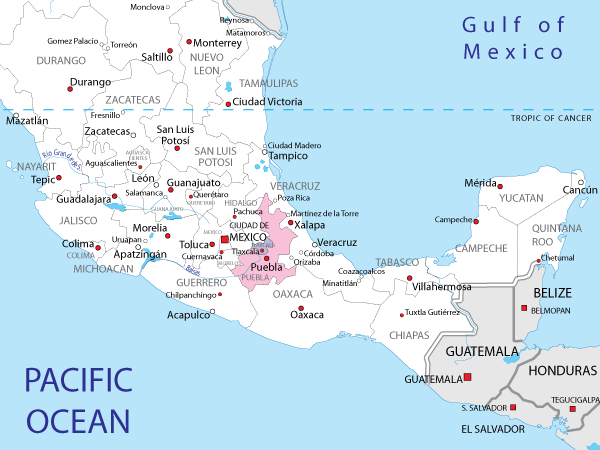The article brings to the fore untapped potential held by the panchayats and municipalities. However, there is a need for devolution in letter and spirit by the states to tap this potential. The article explains how the panchayats and municipalities could contribute effectively in the fight against Covid-19.
Cooperative federalism amid COVID-19
- An unintended but welcome consequence of the struggle against COVID-19 is that the “confrontational federalism” is on the decline with the revival of “cooperative federalism”.
- There is a realisation that there is no way the COVID-19 situation can be tackled except through a measure of cooperation between the Centre and the states.
- Consultative process: The Centre is offering flexibility to states to adopt guidelines to their respective circumstances and states are accepting guidelines from the Centre.
- A principal reason for Kerala’s amazing performance in “flattening the curve” is their robust system of effective devolution. Such devolution helped the Kudumbashree programme to function in association with the panchayats.
The concept of 3 tier devolution: Centre-State-Panchayats
- Article 243G provides that state legislatures “may, by law, endow the Panchayats with such powers and authority as may be necessary to enable them to function as institutions of self-government”.
- This means state governments cannot and must not treat panchayats as extensions of the state government but as “institutions of (local) self-government”.
- The logic of “cooperative federalism” is that states must function not as implementation arms of the central government but as autonomous units within the federation.
- By the same logic panchayats too must be conceived not as an extension of state governments but as “units of self-government”.
- It is thus that panchayats need to be brought into the three-tier devolution system envisaged in the Constitution: Centre-State-Panchayats (and municipalities).
How could devolution help in the fight against Covid-19?
- In line with the rising cooperation between the Centre and the states, the focus should be on further devolution in keeping with the constitutional obligations under the 73rd and 74th amendments.
- The starting point could best be Entry 23 of the Eleventh Schedule that reads, “Health, sanitation, including hospitals, primary health centres and dispensaries”
- Entry 23 is among the list of 29 subjects illustratively set out for devolution to the panchayats, subject to conformity legislation being enacted by state legislatures.
- All state legislation has included this subject for devolution.
- Therefore, empowering the panchayats in this regard with functions, finances and functionaries is now a statutory obligation under state law under Article 243G.
- With the migrant workers returning to their native villages, it is important to fully involve village panchayats and municipalities as “institutions of self-government” – 243W in the anti-COVID-19 campaign.
- Entry 28 of the Eleventh Schedule mentions the “public distribution system” as among the subjects for devolution.
- There are many other entries in the Schedule that are relevant to this exercise.
- There is an army of 32 lakh elected representatives in the panchayats and about two lakh more in the municipalities to contribute in the fight against Covid-19.
- Well over a third of them, some 10-12 lakh, are drawn from the Scheduled Castes and Tribes and, therefore, in touch with the most destitute in every village and town.
- There are some 14 lakh women who have established themselves by election as village leaders.
- Imagine a constructive role such women can play as “front-line workers” in the battle against the coronavirus.
- The most important requirement is planning to receive the migrant labour influx.
- Last-mile delivery can only be comprehensively ensured by empowered panchayats and municipalities reporting to their respective gram sabhas and ward sabhas mandated under Articles 243 A and 243 S.
- Planning for withstanding the ingress of COVID-19 requires the full deployment of the mechanisms for district planning envisaged in Article 243 ZD.
Consider the question asked by the UPSC in 2018-“Assess the importance of the Panchayat system in India as a part of local government. Apart from government grants, what sources the Panchayat can look out for financing developmental projects?”
Conclusion
As the cooperative federalism underlines India’s fight against Covid-19, devolution to the third tier –panchayats and municipalities would give a much needed fillip to the fight against Covid-19.
Back2Basics: 73rd and 74th Amendments
- 73rd and 74th Constitutional Amendments were passed by Parliament in December, 1992.
- Through these amendments local self-governance was introduced in rural and urban India.
- The Acts came into force as the Constitution (73rd Amendment) Act, 1992 on April 24, 1993 and the Constitution (74th Amendment) Act, 1992 on June 1, 1993.
- These amendments added two new parts to the Constitution, namely, 73rd Amendment added Part IX titled “The Panchayats” and 74th Amendment added Part IXA titled “The Municipalities”.
- The Local bodies–‘Panchayats’ and ‘Municipalities’ came under Part IX and IXA of the Constitution after 43 years of India becoming a republic.
Salient Features
- Basic units of democratic system-Gram Sabhas (villages) and Ward Committees (Municipalities) comprising all the adult members registered as voters.
- Three-tier system of panchayats at village, intermediate block/taluk/mandal and district levels except in States with population is below 20 lakhs (Article 243B).
- Seats at all levels to be filled by direct elections [Article 243C (2)].
- Seats reserved for Scheduled Castes (SCs) and Scheduled Tribes (STs) and chairpersons of the Panchayats at all levels also shall be reserved for SCs and STs in proportion to their population.
- One-third of the total number of seats to be reserved for women. Onethird of the seats reserved for SCs and STs also reserved for women. One-third offices of chairpersons at all levels reserved for women (Article 243D)
- Uniform five year term and elections to constitute new bodies to be completed before the expiry of the term. In the event of dissolution, elections compulsorily within six months (Article 243E).













